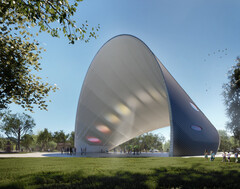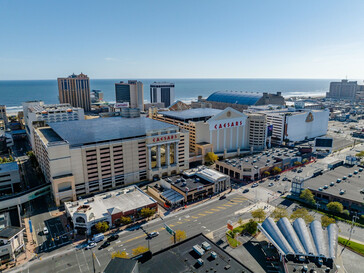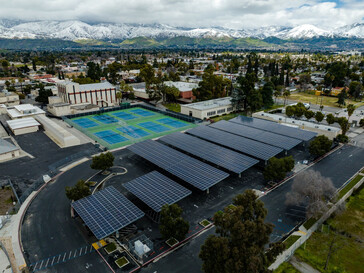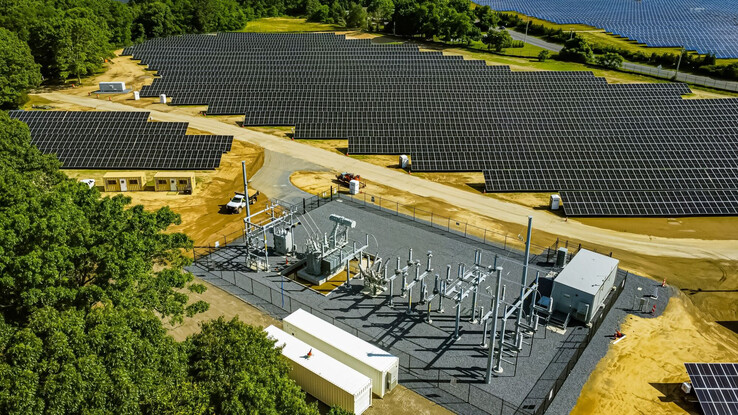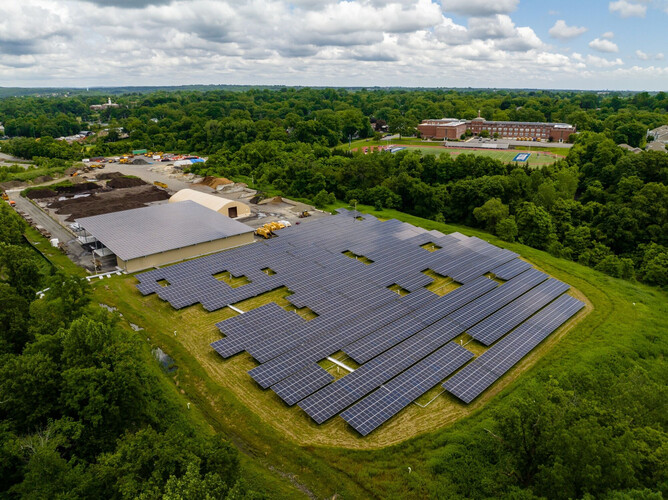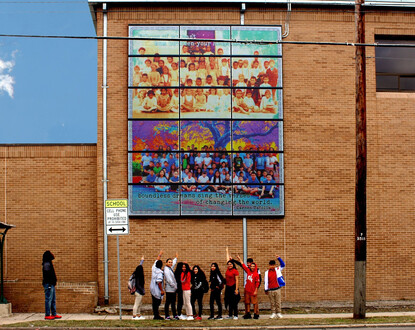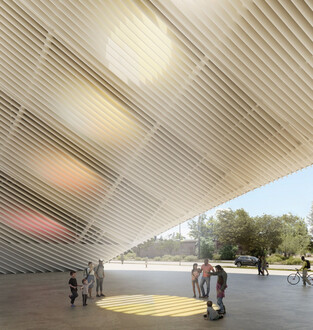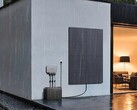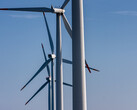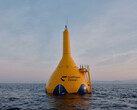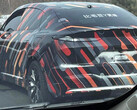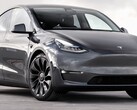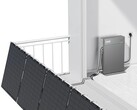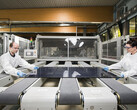Solar energy already accounts for three-quarters of renewable energy capacity and will add more than 500 gigawatts this year alone, according to the International Energy Agency. But with one megawatt of power requiring around five hectares of land, photovoltaic systems take up a lot of space.
Urban planners and landscape architects will therefore have to be increasingly creative in order to use unused areas wherever possible, such as disused landfill sites, the roofs of car parks, former golf courses, lakes or the walls of buildings. Meanwhile, for private consumers, compact balcony power systems are growing in popularity, and there is a trend towards mini solar panels for devices such as smartphones, small fans or mobile camping lamps, to increase energy independence and help protect the climate.
Car parks and garages
Car park canopies made from solar panels not only provide shade, but they can also be used as a direct source for charging electric cars. DSD Renewables of New York, for example, has fitted modules to the car parks at Rutgers University in New Jersey, and is pushing ahead with a 6.5 megawatt canopy project at Caesars Entertainment Casino, as well as many other projects in the US totalling around 200 megawatts.
Golf courses and lakes
However, disused golf courses are also a popular location for solar farms, as the land has already been cleared and is also flat. It remains to be seen whether it would make more sense, in terms of climate protection, to reforest such areas, but that is a separate issue. Another well-known example is the floating solar parks that have been built on various lakes around the world, with more than 6,000 local systems that are completely self-sufficient in terms of power supply.
The floating solar park in Huainan, China, for example, uses more than 500,000 modules from manufacturers such as Ja Solar and inverters from Sungrow. It is located on a man-made lake in a former coal mine. The solar panels cover an area equivalent to 400 football fields.
Waste disposal site
Landfills In the US, incentives for companies to build solar projects on brownfield sites such as landfills include financing and programmes to accelerate the transition to a clean energy economy. Ben Jones of DSD, which has built a 4.3 megawatt solar farm on a landfill site in Bethel, New York, to reduce greenhouse gasemissionsand cut energy costs for the municipal operations, explains:
It’s dead space and can’t be built on otherwise, you might as well build a solar farm.
Building facades
An attractive location for artistic solar projects are also the boring facades of various buildings. The Land Art Generator, for example, organises competitions for solar artists on a regular basis. In Houston next year, Berlin artist Riccardo Mariano's Arch of Time solar panel installation will provide shade and energy to power 40 homes. The design of the artwork is inspired by a sundial, although in this case the time is indicated by the sunlight rather than by the shadows.




